 "QUANTUM SHOT" #196 "QUANTUM SHOT" #196Link - article by Avi Abrams Fluid dynamics, turbulence, refraction combine to create spectacular sky shows! More and more high-altitude vapour trails appear in our skies as the flight density of commercial aviation increases. These trails often follow the plane straight and narrow, then degrade into fuzzy and fanciful formations, blending with clouds and leaving a subtle afterimage in our subconscious. We almost do not notice them any more! But as the following photos show, sometimes a simple condensation trail from a jet engine can be worth a second glance. 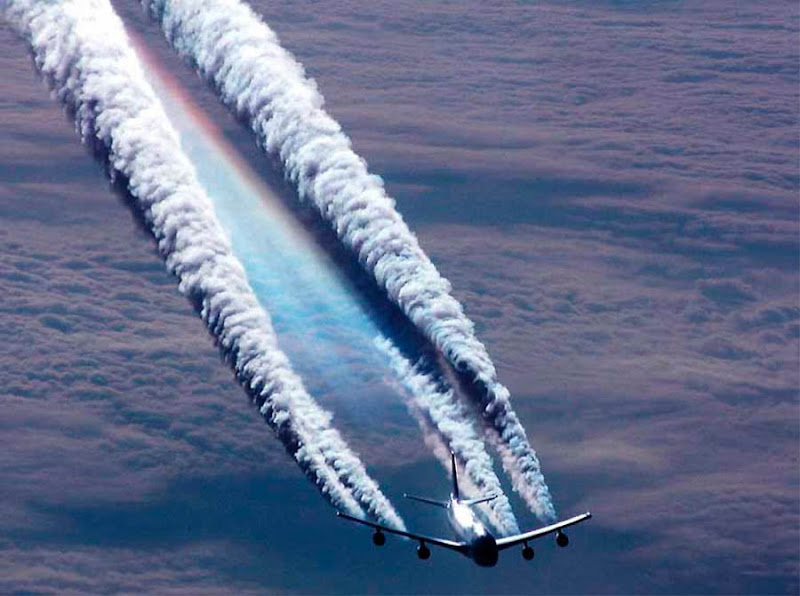 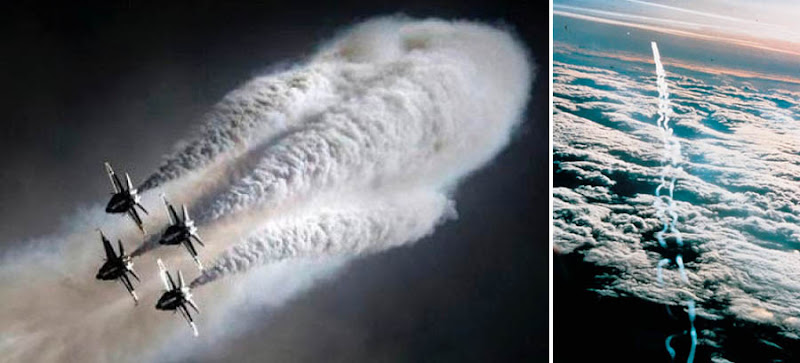 (images via 1, 2) There are four aircraft in this picture, "dominated by the A330 in front and its huge contrail": 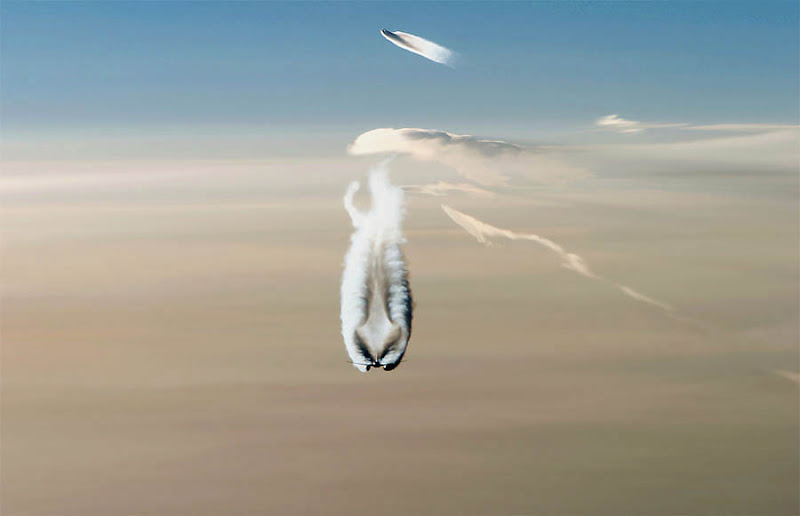 (image credit: Bailey, AirTeamImages) Contrails, also called "Chemtrails" or "Vapor Trails", are usually forming at high altitudes and consist of tiny ice crystals, or water droplets. The sort of contrails generated by engine exhaust would, of course, contribute to pollution (here is an interesting discussion on the topic), but the visible white streams in the sky (often combined with airplane's "wingtip vortices") are essentially ice crystals and pure condensation trails. "Being composed of water, they are not, in and of themselves, air pollution." 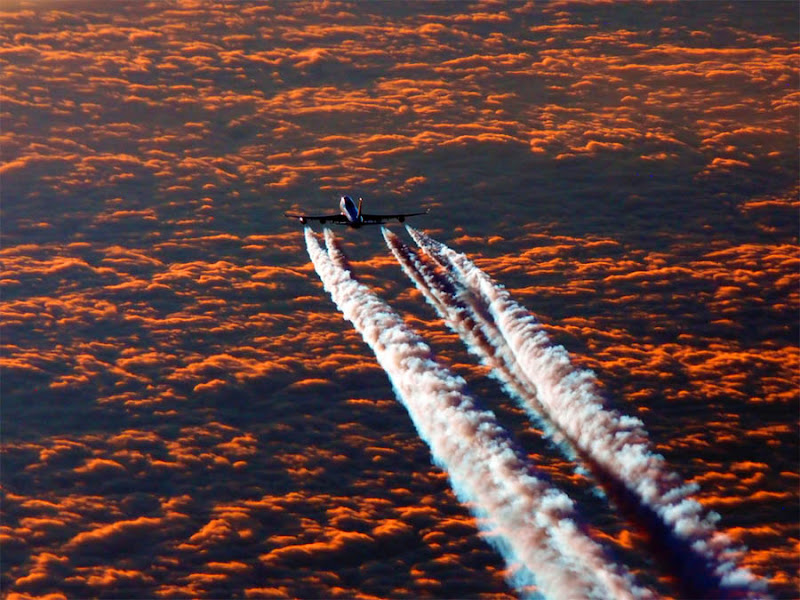 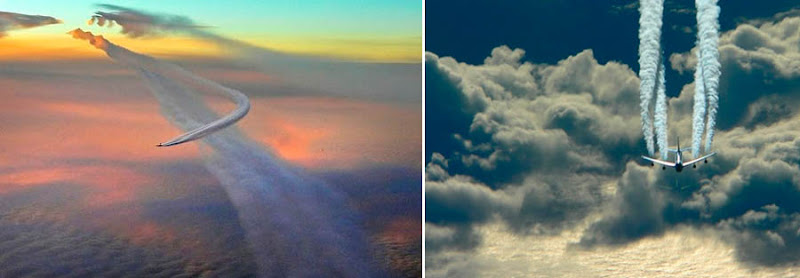 (images credit: Laurent Malbecq, 2) Contrails tell the story: here USAF F-15 Eagle Fighters intercept two Soviet MiG-29 fighters: 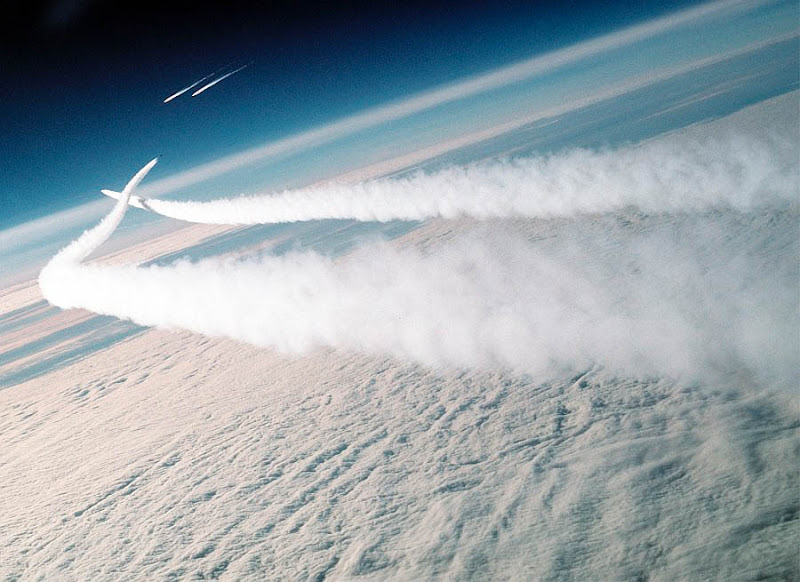 (image credit: Staff Sgt. Kevin L. Bishop, USAF) More thick contrails:  (images credit: TriplET, Brett B. Despain) And look at these glorious, simply magical contrails glowing in the sunset, or right before the sunrise!... in the right picture, it's Tupolev Tu-154 soaring over Siberia:  (images credit: TriplET) "Romancing the Clouds": Airplanes create art in the sky The amazing cloud "downwash effect" forms around a passing Cessna airplane... The sunset light makes it all the more spectacular: 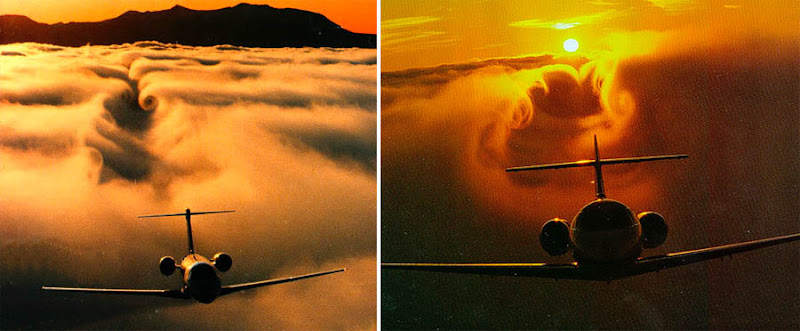 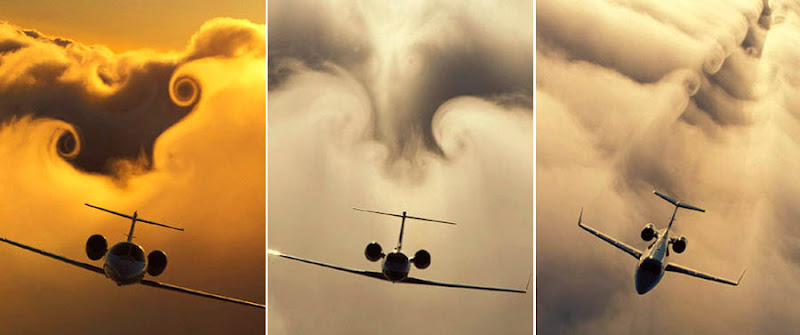 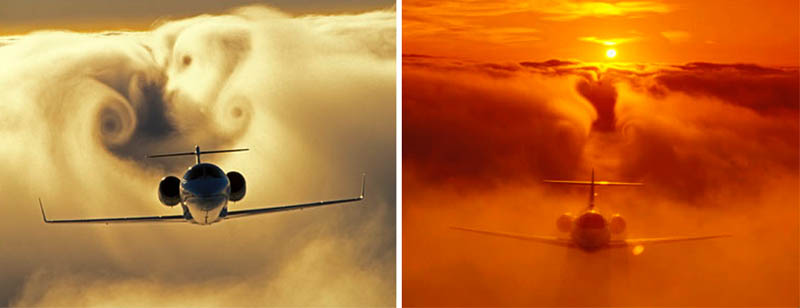 (images credit: Paul Bowen, Cessna Aircraft Company) Wake turbulence and some interesting fluid dynamics produce intricate baroque-shaped swirls in the clouds: 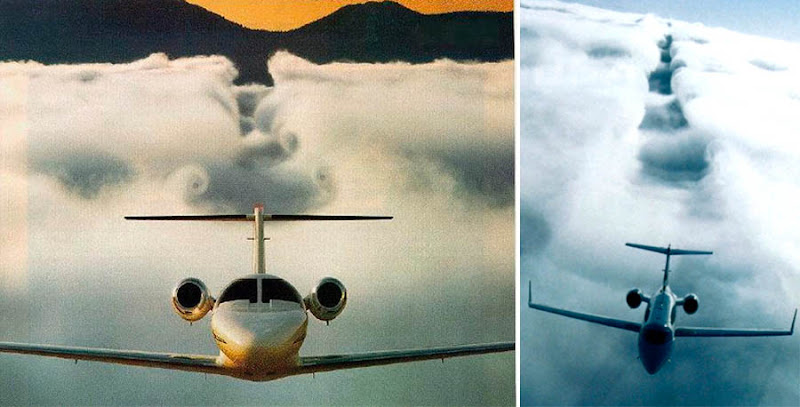 (images credit: Daniel Koury, Paul Bowen) Here is a truly smooth, fluid and elusive creation: 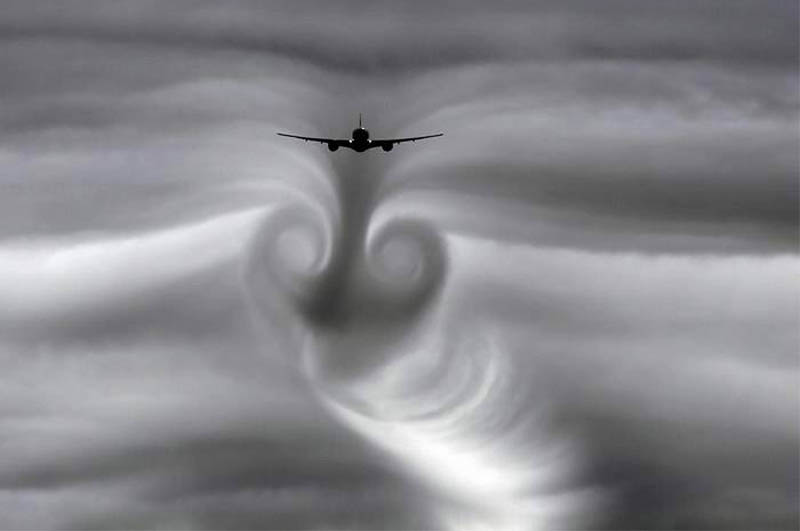 (image via) Condensation wingtip vortices give an out-of-this-world quality to this picture:  (image credit: Tim de Groot) Great show of the wingtip vortices and the wake turbulence effect on the cloud, caused by Airbus A340 approach:  (image credit: Fabricio Jiménez) Somewhat ominous and ghostly wake turbulence behind a Boeing 747: 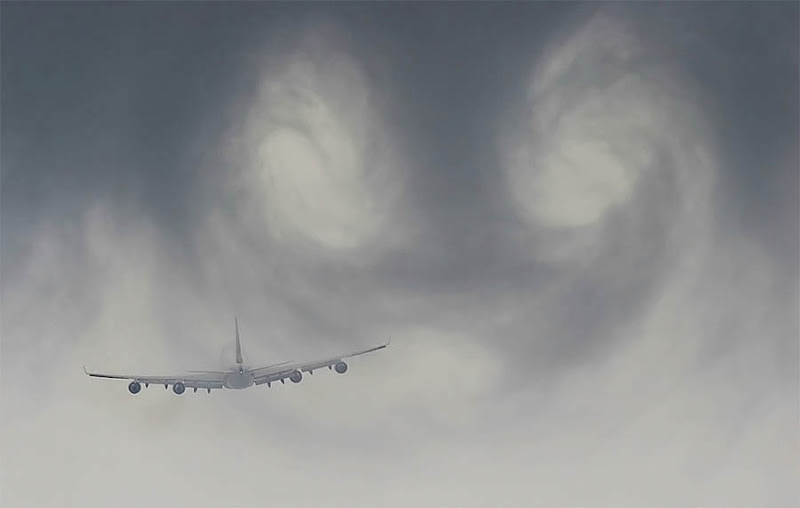 (image credit: Daniel Alaerts) Jets, contrails and condensation clouds: a new dance in the sky "Fly me to the Moon": this classic photograph was taken with a simple zoom lens, "out in the garden, with no tripod": 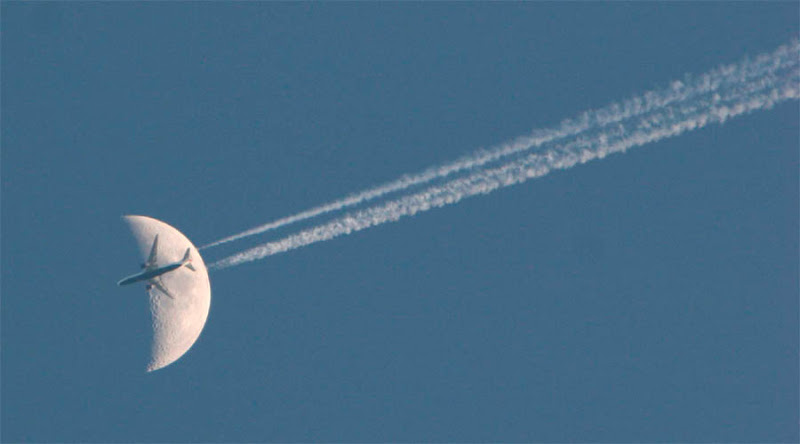 (image credit: Barry McGrath) Or... fly me "out of the Sun" instead: 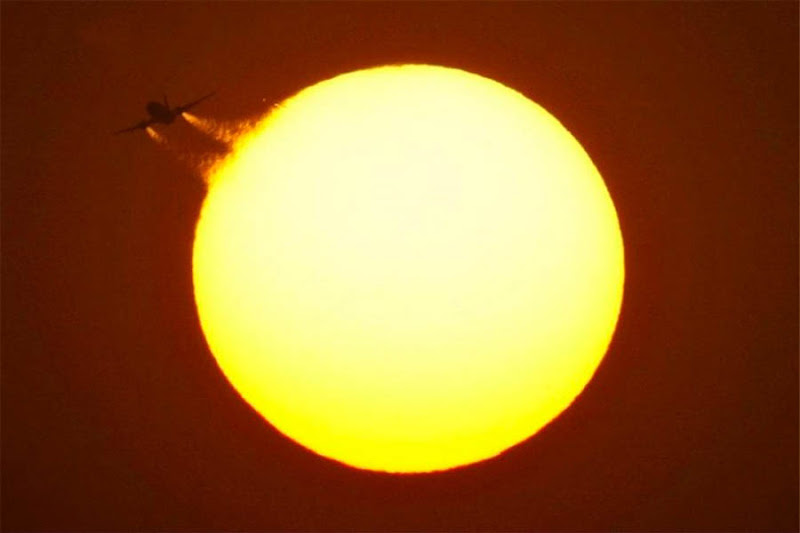 (original unknown) Round and heart-shaped vapour trails; see also the flag of the United Kingdom made out of contrails here - 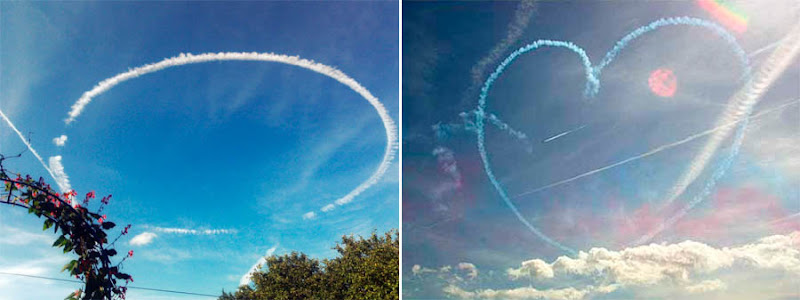 (images via) Partial solar eclipse and an aircraft's vapour trail over Frankfurt: 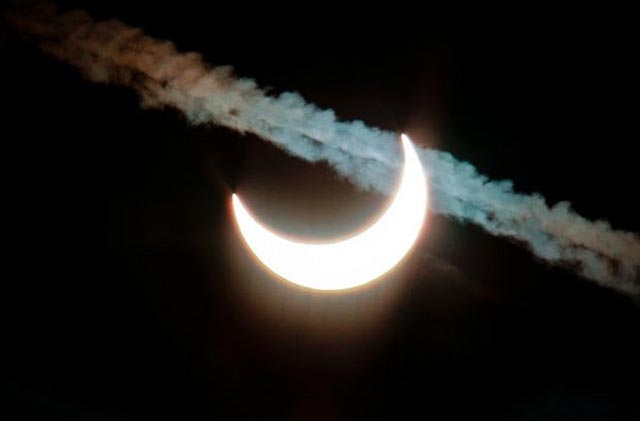 (image credit: EPA) Here is a red contrail over... what looks to be a looming Death Star:  (image credit: Stefan Seip) Sometimes an epic build-up of clouds needs a flying jet to emphasize the scale and anchor the composition:  (image credit: Strange Vehicles) A big feather in the sky, and some beautiful patterns "enhancing" the sunset:  (images via 1, 2, 3) Heavenly Highways! - 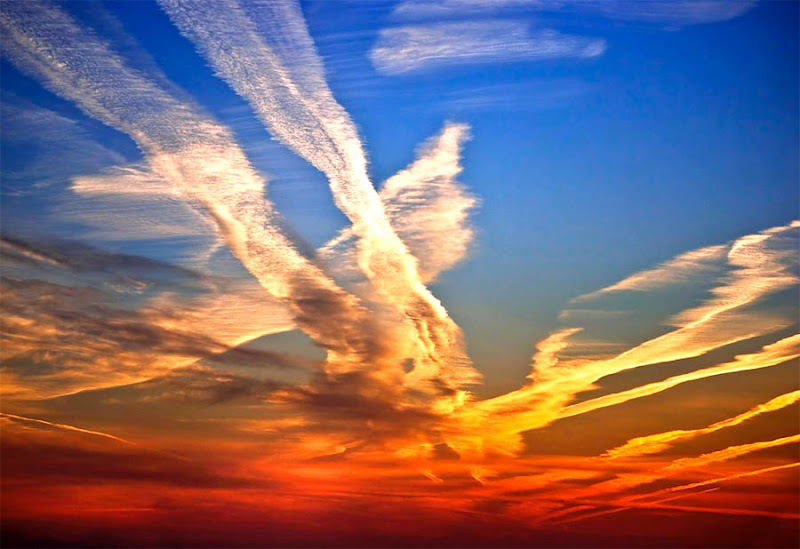 (image via) The Opposite of Contrails when the jet passes through a cloud, it is the absence of the trail (so called "distrail") that becomes visible - as the plane clears its way through the cloud, the turbulence and freezing of supercooled water droplets cause elongated trails, stretching for dozens of kilometers and even visible from space: 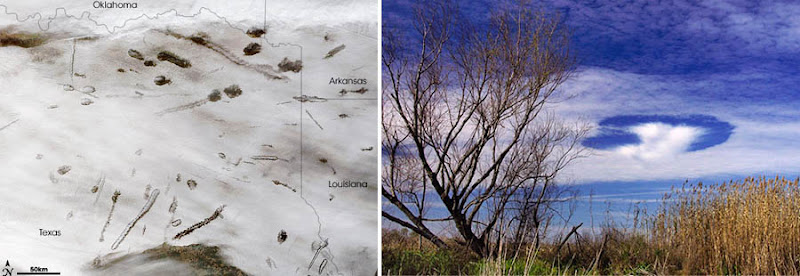 (images credit: NASA, via) "As an aircraft passes through the supercooled clouds (supercooled clouds contain water droplets that remain liquid even though the temperature is well below freezing), tiny particles in the exhaust come into contact with the supercooled water droplets, which freeze instantly. The larger ice crystals fall out of the cloud deck, leaving behind the "holes", while the tiniest ice particles in the center remain aloft." - more info Propeller tip vortices swirl around the fuselage... There are other types of contrails besides those from the engine exhaust. Our reader writes: "I've seen and taken pictures of propeller-driven aircraft with contrails forming off the prop tips and wrapping themselves around the fuselage and nacelles of the aircraft for five or six spirals from the front of the aircraft/nacelle. This is usually in high ambient temperature/high humidity conditions." Propeller vortices could be just as interesting visually as wingtip vortices, but they're harder to spot and rare to occur: in this case they are clearly seen around the Lockheed Martin C-130J-30 Hercules C4:  (image credit: Sven De Bevere) Breaking the Sound Barrier: Transonic Cloud Effects Going over the sound barrier leads to one of the most amazing condensation effects: so called "Prandtl-Glauert Condensation Clouds" caused by the rapid cooling of the air. You have to be really quick with your camera to capture it, as it only occurs at the exact moment of crossing the sonic barrier. This page has many photographs and videos of this phenomena. A F/A-18F Super Hornet streaks past the aircraft carrier U.S.S. Kitty Hawk in the Philippine Sea: 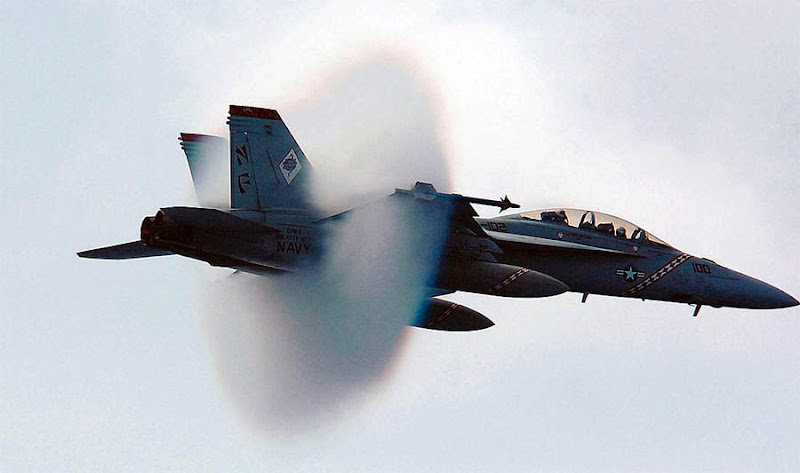 (U.S. Navy photo by Petty Officer 3rd Class Jonathan Chandler, via) Skilled pilots can actually control the exact position where such a cloud can appear: "it is possible to work the plane's throttle (controlling the airspeed) to move the shock wave forward or aft" - 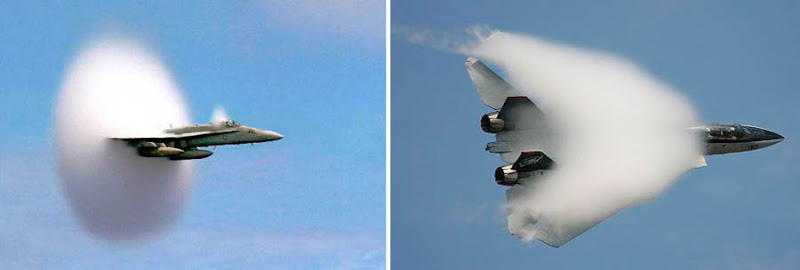 (images credit: Ensign John Gay, U.S. Navy) As you can see on the left image above, the smaller shock wave appears over the cabin, as well... Here is an F-14 causing the effect, as it completes a super-sonic flyby (left) and F-22 Raptor on the right:  (images credit: Jarod Hodge, Ronald Dejarnett, U.S. Navy) Our reader Ian Woolard comments on this effect: "These weird clouds occur when the aircraft is moving at transonic speed - these are from about Mach 0.8 to Mach 1.2, and I suspect that none of these aircraft are actually going faster than Mach 1.0. There is a reason for this: the shapes are caused where the air is "temporarily" forced to speed up past the aircraft to supersonic speeds, but since the aircraft is moving below the speed of sound, no sonic boom reaches the ground." You can clearly see wingtip vortices in this picture, as the VFA-94 (Fixed Wing Strike Fighter Squadron 94, also known as the "Mighty Shrikes") F/A-18C Hornets streak across the sky: 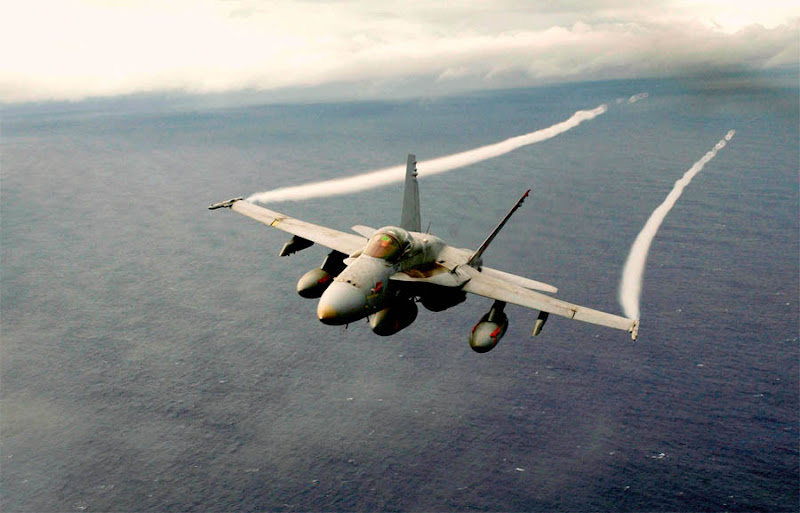  (images credit: Mate 3rd Class Elizabeth Thompson, Mate 3rd Class Kristi J. Earl, U.S. Navy) Some fighter jets don't even need any cloud effects to make them look cool... these are SAAB-35 Drakens showing impressive jet glow in the night:  (images credit: Belgium Air Force Sgt. Dirk Voortmans, 2) There is a plane at the end of this rainbow! Perhaps the most sublime effect of them all is the rainbow and shadow combination appearing in the sky, or on the clouds around a condensation trail of a passing jet: 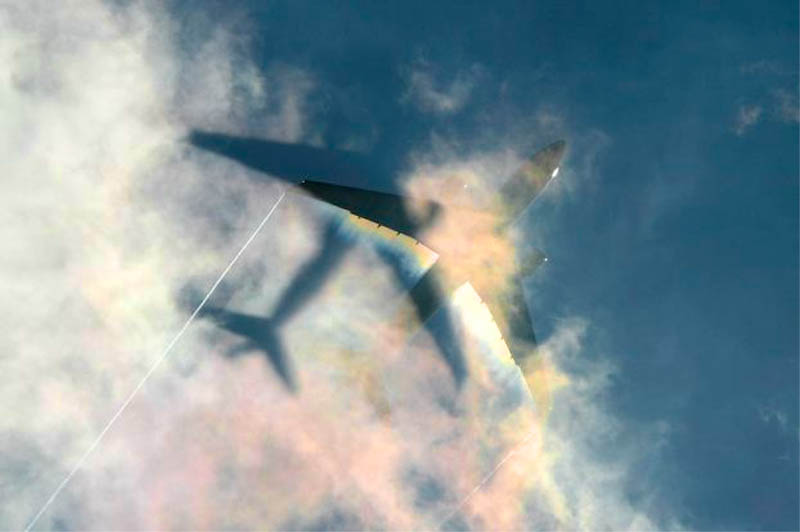 (image via) This shot of rainbow contrails from Airbus A-340 has an ephemeral, almost surreal quality: 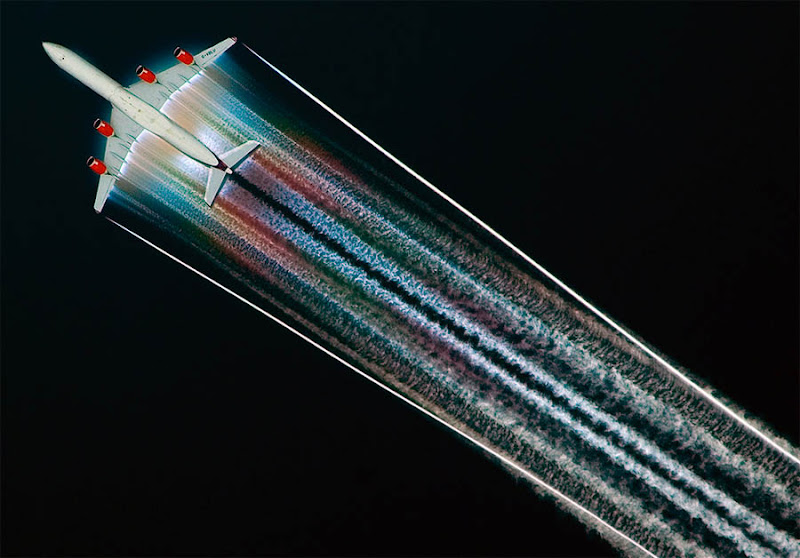 (image credit: Jeff Well) More man-made rainbows in the sky: 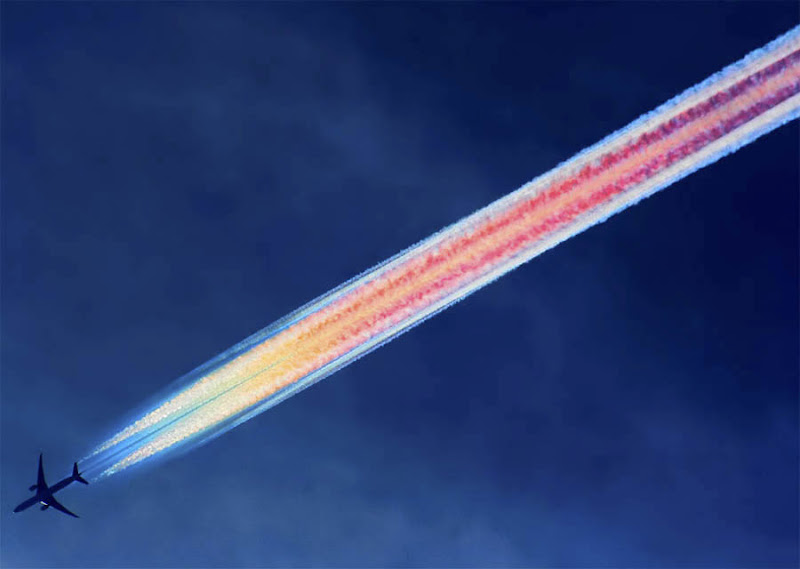 (image credit: Karol Staniec) And finally, here is a striking fiery contrail from a 747, fading in the last rays of the setting sun:  (image credit: Ivan Voukadinov) Send us your own photographs of jet trails and cloudscapes, that you took during a long flight, perhaps, just to pass the time... or any other unique high-altitude shots that you had opportunity to capture. READ THE REST OF OUR "AIRPLANES" CATEGORY ->
|
